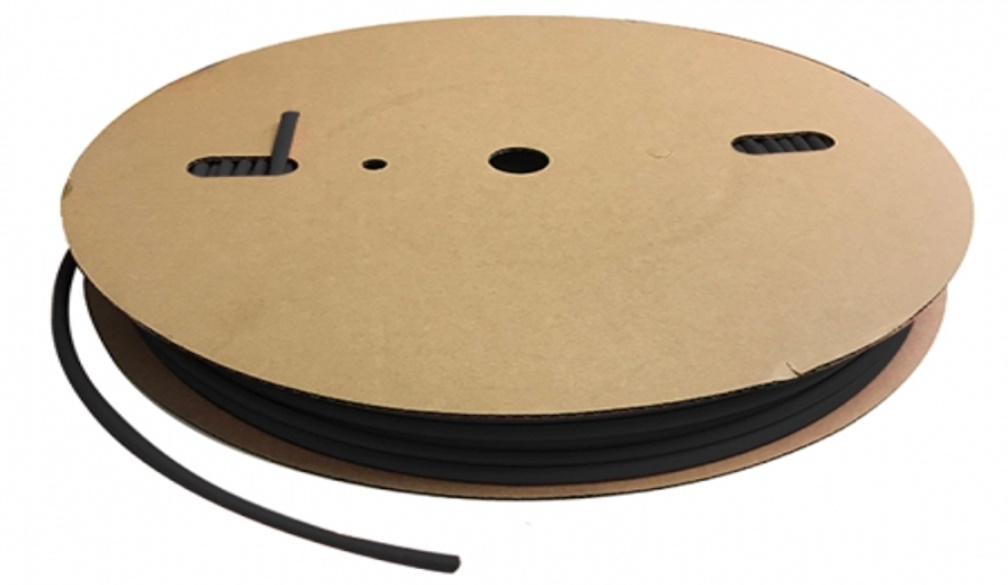10 Creative Uses for Heat Shrink Tubing

Heat shrink tubing is an incredibly versatile tool used across various industries and DIY projects. It is a shrinkable plastic tube that contracts when heat is applied, providing insulation, protection, and reinforcement for wires and other objects. While it is widely known for its electrical applications, heat shrink tubing has many creative and practical uses that often go unnoticed. Here are the ten innovative ways to use heat shrink tubing, helping you maximize its potential.
1. Cable Insulation and Repair
One of the most common uses for heat shrink tubing is insulating and repairing cables. Over time, wires can become frayed or damaged, exposing them to electrical hazards. Heat shrink tubing acts as a protective shield, restoring the wire's integrity and preventing further damage. Simply slip the tubing over the affected area and apply heat with a heat gun or lighter to create a snug fit. This is particularly useful for power cords, headphone wires, and other essential cables.
2. Organizing and Bundling Wires
Heat shrink tubing can be used to bundle multiple cables together, creating a clean and organized appearance. This is especially helpful for home entertainment systems, computer setups, and automotive wiring. By color-coding the tubing, you can easily identify individual cables in the bundle, improving efficiency and reducing clutter. Opt for heat shrink tubing with adhesive lining for a more secure and long-lasting solution.
3. Labeling and Identification
Labeling wires and cables is vital in complex systems, especially in server rooms, electrical panels, and networking setups. Heat shrink tubing makes labeling simple and durable. Use printable heat shrink tubing or write on the tubing before shrinking it. The labels remain visible and protected from wear, moisture, and chemicals, making them ideal for long-term use.
4. Custom Grips for Tools and Handles
Transform slippery or uncomfortable tool handles by adding heat shrink tubing for a custom grip. It provides a non-slip surface and enhances comfort, especially for tools used in wet or oily environments. This technique works well for pliers, screwdrivers, bike handles, and even sports equipment like tennis rackets. Choose textured or rubberized heat shrink tubing for the best results.
5. Protecting Soldered Connections
Soldered connections are fragile and susceptible to environmental damage. Heat shrink tubing provides an extra layer of protection, insulating the solder joint from moisture, dust, and mechanical stress. This is particularly valuable for electronics, automotive wiring, and industrial equipment. Choose dual wall heat shrink tubing with an adhesive lining for added durability.
6. Waterproofing Connections
Electrical connections exposed to moisture are prone to corrosion and failure. Heat shrink tubing with adhesive lining creates a watertight seal, protecting connections in marine, automotive, and outdoor applications. This is particularly useful for wiring in boats, trailers, and garden lighting systems. Ensure you use waterproof-rated tubing to achieve the best protection.
7. Strain Relief for Cables
Constant bending and pulling can weaken cable connections over time. Heat shrink tubing provides strain relief, reinforcing the junction between the cable and its connector. This prolongs the cable’s lifespan and prevents accidental disconnections. Apply the tubing at the connector’s base and shrink it to ensure a secure and flexible reinforcement.
8. Decorative and Custom DIY Projects
Heat shrink tubing isn’t just functional—it can also add an aesthetic touch to your DIY projects. Use colorful tubing to decorate pens, craft jewelry, or create custom art pieces. Its ability to conform to irregular shapes makes it ideal for crafting unique designs. Try experimenting with patterned or glow-in-the-dark tubing for creative flair.
9. Repairing and Reinforcing Shoelaces
Broken or frayed shoelaces can be fixed quickly with heat shrink tubing. Cut a small piece of tubing and slide it over the damaged area. Once heated, the tubing shrinks and provides a durable covering that prevents further fraying. You can also use this method to reinforce new laces, extending their lifespan and creating a polished look.
10. Customizing and Protecting Fishing Gear
Anglers often use heat shrink tubing to customize and protect their fishing gear. For instance, it can be applied to fishing rod handles for better grip and comfort. Additionally, tubing can be used to secure and organize hooks, lines, and lures. This protects gear from damage and makes it easier to transport and store.
Tips for Choosing the Right Heat Shrink Tubing
Selecting the right type of heat shrink tubing is crucial for achieving optimal results. Here are some factors to consider:
- Shrink Ratio: Common ratios include 2:1, 3:1, and 4:1. Choose a ratio that accommodates the size of the object you’re covering.
- Material: Polyolefin is the most widely used material, offering excellent insulation and durability. For specialized applications, consider fluoropolymer or PVC tubing.
- Adhesive Lining: Tubing with adhesive provides a watertight seal and extra strength.
- Temperature Resistance: Ensure the tubing’s temperature rating matches the environment it will be exposed to.
- Color and Finish: Choose colors and finishes that suit your project’s needs, whether for labeling, decoration, or concealment.
Heat shrink tubing is a highly versatile tool that goes beyond its traditional electrical applications. From cable management and waterproofing to custom grips and DIY projects, its uses are limited only by your imagination. By incorporating heat shrink tubing into your projects, you can enhance durability, safety, and aesthetics with minimal effort.
Whether you’re a professional electrician, a DIY enthusiast, or someone tackling everyday repairs, heat shrink tubing is a must-have addition to your toolkit. Explore high-quality heat shrink tubing at reputable suppliers to ensure reliability and performance.









